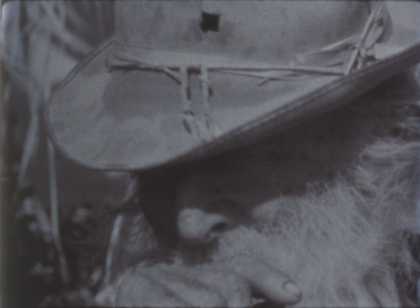I start out on a quest. Thus, again I am speaking of a man in the past, a hero-maker, a storyteller, an image-maker, with whom I was vitally concerned – gradually; I didn’t know any initial point I was concerned with in general, but I was concerned with heroes. Just like a warrior, this poet would start when it was time to start, not knowing really particularly where. And then where he found himself – places that began to tell him where he was bound – he then, of course, began to know about where he was after all.
Bruce Baillie
This programme presents two works that explore the imagistic heroic with which Baillie identified. Together with Mass, Quixote and To Parsifal are the last in which the filmmaker was not only learning technique, but discovering himself, often by way of these heroic forms.
Bruce Baillie, Quixote, USA 1965, 16mm, colour and black and white, sound, 45 min
Originally intended for two simultaneous screens and encapsulating the filmmaker’s first period of work, Quixote is a kind of summary and conclusion of a number of themes, especially that of the hero … depicting Western orientation as essentially one of conquest. The film is conceived in a number of different styles and on a number of simultaneous levels.
‘The Vietnam War was an essential expression of our American (Occidental, Christian) way of comprehending the world, ourselves, history; that is a reason for its thematic appearance in Quixote. The presentiment at the end of the film is of the end we have created for ourselves.’
Bruce Baillie
Bruce Baillie, To Parsifal, USA 1963, 16mm, colour, sound, 16 min
‘Tribute to the hero, Parsifal … the European legend as basic structure, as well as the hero … “He who becomes slowly wise.” (Wagner, Parsifal) Promised land, I suppose … the last temptation … time, flesh, etc … Off the coast, at sea, the mountains and the … slow freight trains through the passes; the Wagnerian spirit, ancient Christian legend. Compassion for nature, pursuit (of Eternal Life) through the heroic form.’
Bruce Baillie
Introduced by Garbiñe Ortega, series curator
Tate Film is supported by LUMA Foundation

